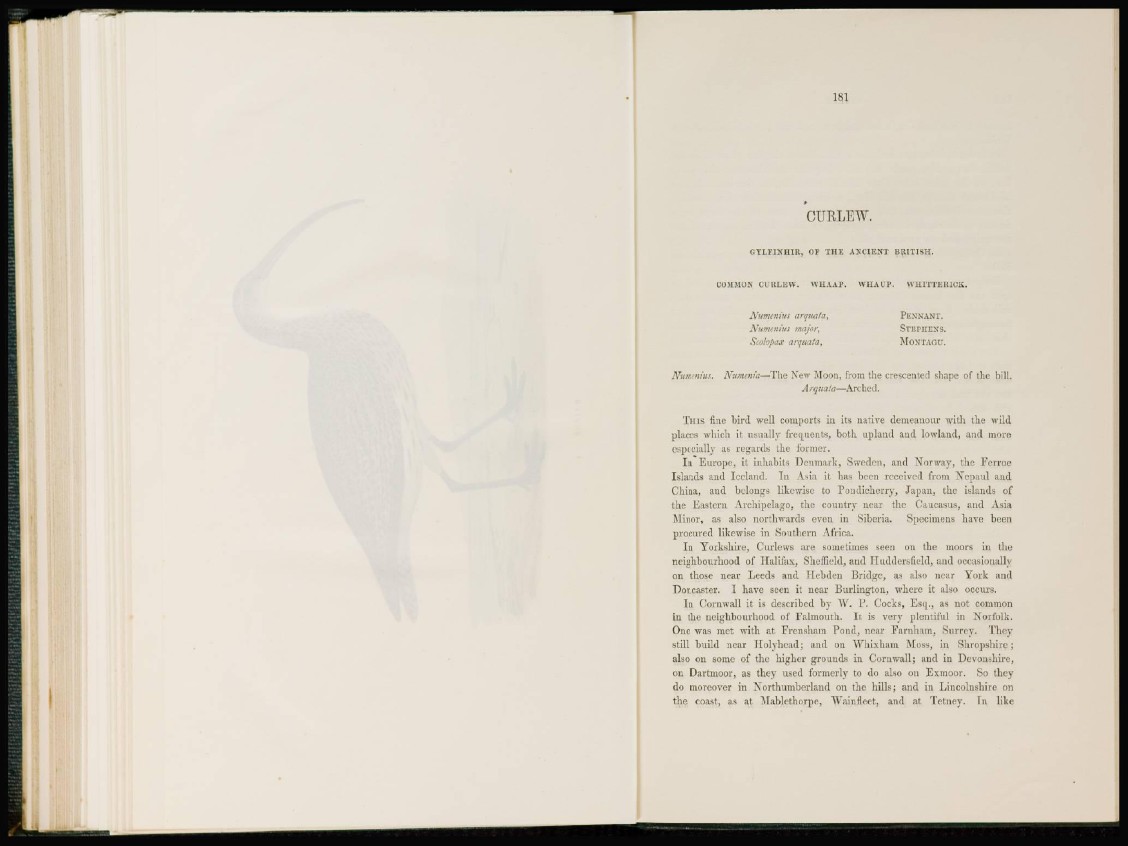
Ï S I
CURLEW.
GYLFINHIR, OF THE ANCIENT BRITISH.
COMMON CURLEW. WHAAP. WHAUP. WIUTTERIOK.
Nunicnins arquata,
Numcnius major,
Scolopax arquata,
PENNANT.
STEPHENS.
MONTAGU.
Nummius. Numenia—The New Moon, from the crescented shape of the bill.
Arquata—Arched.
THIS fine bird well comports in its native demeanour with, the wild
places which it usually frequents, both upland and lowland, and more
especially as regards the former.
I n Europe, it inhabits Denmark, Sweden, and Norway, the Ferroe
Islands and Iceland. In Asia it has been received from Ncpaul and
China, and belongs likewise to Pondicherry, Japan, the islands of
the Eastern Archipelago, the country near the Caucasus, and Asia
Minor, as also northwards even in Siberia. Specimens have been
procured likewise in Southern Africa.
In Yorkshire, Curlews are sometimes seen on the moors in the
neighbourhood of Halifax, Sheffield, and Huddcrsflcld, and occasionally
on those near Leeds and Hcbden Bridge, as also near York and
Doncaster. I have seen it near Burlington, where it also occurs.
I n Cornwall it is described by W. P. Cocks, Esq., as not common
in the neighbourhood of Falmouth. It is very plentiful in Norfolk.
One was met with at Frensham Pond, near Farnham, Surrey. They
still build near Holyhead; and on Whixham Moss, in Shropshire;
also on some of the higher grounds in Cornwall; and in Devonshire,
on Dartmoor, as they used formerly to do also on Exmoor. So they
do moreover in Northumberland on the hills; and in Lincolnshire on
the coast, as at Mablethorpe, Wainfleet, and at Tetney. In like